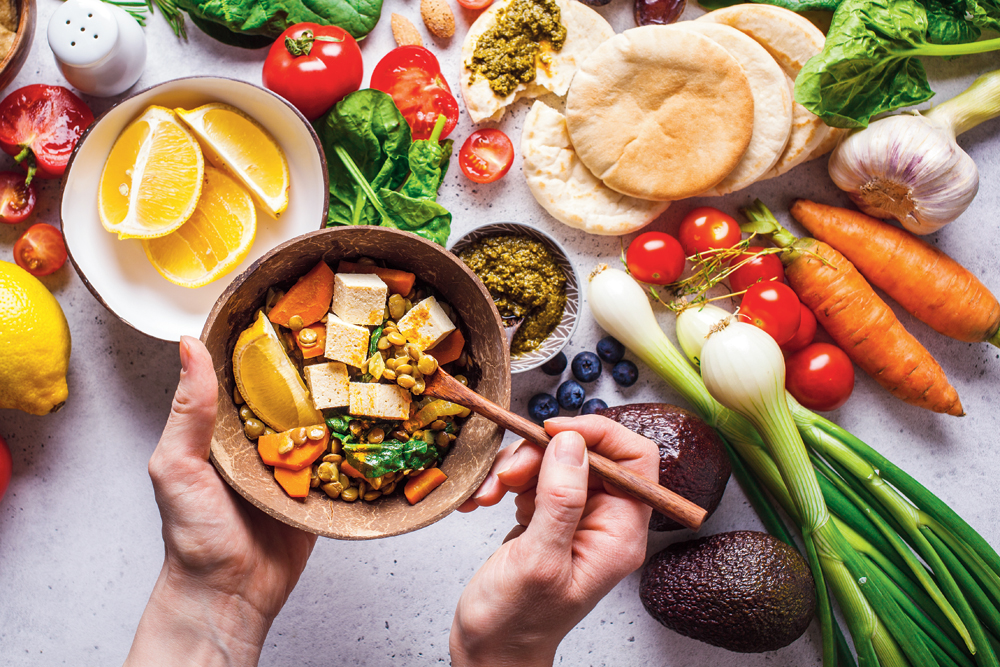For all of my adult life, I’ve revelled in rare steaks and oozing Camembert. Yet over the past few months, I’ve cut way down on my lamb chops and grilled cheese sandwiches. And if you’re a meat-and-dairy eater who aches over the environmental state of our planet, then you may be thinking of doing the same thing, too.
It started when my colleague Julia Moskin teamed up with Brad Plumer from The New York Times climate desk to report on how our current food system is contributing to climate change. The results were crystal clear and deeply depressing. Meat and dairy production alone accounts for 14.5 per cent of the world’s greenhouse gas emissions — as much each year as from all cars, trucks, airplanes and ships combined.
Becoming vegan would be the most planet-friendly way to go, followed by going vegetarian. I love meat and dairy too much to give them up entirely. But eating less of them? That I can do. It means there is more room on my plate for other delectable things: good sourdough bread slathered with tahini and homemade marmalade, mushroom bourguignon over a mound of noodles, and all those heirloom beans I keep meaning to order online.
How much meat and dairy should we actually be eating? And if we reduce our intake severely, do we then need to worry about getting enough protein? According to Marion Nestle, an author and professor emeritus of nutrition, food studies and public health at New York University, US, if you are getting enough calories, then you are getting enough protein.
One way to strategise is to keep the daily mix of what you eat to 80 per cent plant matter and 20 per cent meat, dairy and seafood. For my meat allotment, I focussed on chicken, pork and local seafood, which are less taxing to the environment than beef and lamb.
What follows is my personal guide to eating less meat and dairy, with tips and strategies.
Eat beans and more beans
We are a family of bean lovers, so adding more of them to our weekly menu makes for happiness all around. To keep us from getting bored, though, I’ve widened the net, seeking out less common varieties such as brown-dappled Jacob’s Cattle beans and purple-swirled Christmas lima beans, along with my usual roster of chickpeas, lentils and cannellini.
I’ve also changed the way I think about chili, one of my go-to bean-based meals. I used to add a small amount of ground meat to my chili pot as a matter of course, unless I was making a specifically vegetarian chili. Now, I usually skip the meat — save for the occasional spoonful of bacon grease or lard for richness — and I don’t miss it.
Beans are also excellent stand-ins for meat in certain recipes, such as using chickpeas in a riff on Indian butter chicken, and filling tacos with black beans instead of pork. And there’s an entire universe of dals that I’m continuing to explore.
Turn to high-protein grains
Yes, there’s quinoa, the quick-cooking staple that fills many a grain bowl. But there’s also millet, wild rice, buckwheat, cornmeal and even pasta. Grains have a lot more protein than we often give them credit for, along with a host of vital nutrients, especially when we eat them whole.
Grain bowls make diverse meals that I can throw together from whatever is in the fridge, from leftovers to condiments or both. These days I find myself putting together a grain bowl at least once a week, topped with roasted vegetables and some kind of savoury sauce to bind it all together. These bowls are never boring.
But within this category, pasta is my first choice, and I adore it in every incarnation. And using toasted breadcrumbs in place of Parmesan keeps the dairy quotient down, too.
Embrace nuts and seeds
I could sing the praises of toasted nuts, nut butter and tahini here, but you probably already know everything you need to about them. Whether toasted so they’re satisfyingly crunchy, or puréed and seasoned to become alluringly creamy dressings or sauces, nuts and nut butters are a great way to round out a plate of roasted, steamed or raw vegetables.
What I really want to talk about is my newfound love of homemade vegan cheese. The best recipes I’ve tried are made from cashews, ground up with nutritional yeast and all manner of seasonings (smoked paprika, garlic powder, oregano), and then set with agar powder.
No, they don’t taste anything like actual cheese. But when I rush home, ravenous and stressed after work, and there’s some in the refrigerator that I can nibble with my glass of wine, I don’t miss Stilton nearly as much as I’d feared.
Make every bite count
Now that I’m eating less meat, every single morsel of it needs to hold its own. Which means I’m less likely to bother with a chicken breast when a smaller amount of Italian turkey sausage, sautéed until crisp and strewn over my spinach salad, delivers a lot more oomph. Or how about some duck confit? Assertively flavoured cured pork — bacon, salami, prosciutto — add salty brawn to roasted vegetables and grains, pastas and salads, and a little goes a long way.
Then there’s good, concentrated broth, whether it’s bone broth or otherwise. Using beef broth in mushroom bourguignon contributes tons of savoury character without adding any actual meat. And making bone broth from scratch with the leftovers of your blowout holiday prime rib helps, at least a tiny bit, with the severe problem of food waste in this country. But really, make it because it tastes good.











